Building a custom home is an exciting venture. It offers the opportunity to design a space tailored to your specific needs and preferences, creating a unique living environment. However, custom home construction comes with its own set of risks and challenges that can impact the timeline, budget, and quality of the project. Understanding these potential pitfalls is crucial for avoiding costly mistakes and ensuring the process runs smoothly. Know the risks of custom home construction projects. Why guess? Work with construction experts to avoid costly mistakes and get results.
Here’s a look at the key risks involved in custom home construction projects and how to mitigate them.
Budget Overruns
One of the most common risks in custom home construction is going over budget. It’s easy for costs to escalate due to changes in design, unexpected issues during construction, or price fluctuations in materials. Without careful planning and management, the final price tag can exceed your original budget, leading to financial strain.
To avoid this, it’s essential to create a detailed, realistic budget before construction begins. Factor in all potential costs, including materials, labor, permits, and contingencies for unforeseen expenses. Be prepared for possible price fluctuations in materials and labor, and always include a contingency fund—typically around 10-15% of the total budget—for unexpected costs.
Tip:
Work closely with your builder to establish a fixed-price contract whenever possible. This type of contract can help reduce the likelihood of unexpected cost increases.
Project Delays
Delays are a common risk in custom home construction. Various factors, such as bad weather, supply chain disruptions, labor shortages, or unforeseen structural issues, can slow down progress. Delays not only extend the timeline but can also increase costs due to extended labor or equipment rentals.
To mitigate this risk, it’s important to build flexibility into your project timeline from the start. Work with your builder to set realistic expectations for completion and prepare for potential setbacks. Regular communication with your contractor can also help identify and address issues early, preventing minor delays from escalating.
Tip:
Include a buffer period in your schedule to accommodate potential delays, and have a plan in place to deal with disruptions.
Inadequate Planning and Design
Proper planning and design are critical to the success of any custom home construction project. Inadequate or rushed design processes can lead to costly changes down the road. A poorly thought-out design may also fail to meet your needs or preferences once the home is built, leading to dissatisfaction.
To avoid these issues, take the time to thoroughly plan every aspect of your home before construction begins. Work closely with your architect and builder to ensure the design aligns with your lifestyle, budget, and future needs. Making changes after construction has started can be expensive and time-consuming, so it’s best to finalize your design upfront.
Tip:
Review all design plans carefully and consider how you will use each space in your home. Make sure the design supports both current and future needs.
Unreliable Contractors or Builders
The quality of your custom home largely depends on the skill and reliability of the contractor or builder you hire. Choosing the wrong contractor can lead to poor workmanship, missed deadlines, and even legal issues. Unreliable builders may cut corners, use subpar materials, or fail to follow building codes, resulting in costly repairs and headaches later.
To mitigate this risk, thoroughly vet potential contractors before signing any contracts. Ask for references, check online reviews, and verify that they are licensed, insured, and have a solid track record of successful custom home projects. It’s also a good idea to visit some of their completed homes to see the quality of their work firsthand.
Tip:
Request detailed contracts that outline the scope of work, timelines, costs, and any warranties. Clear documentation helps avoid disputes and ensures accountability.
Unforeseen Site Issues
Custom home construction often comes with site-specific challenges, such as unstable soil, drainage problems, or the discovery of underground utilities. These issues can require additional work, like foundation reinforcements or regrading, which can increase both costs and timelines.
To minimize the risk of unforeseen site issues, conduct a thorough site analysis before breaking ground. This may involve working with a geotechnical engineer to assess soil stability and drainage or hiring a surveyor to identify any potential underground hazards. Addressing these issues early on will help prevent costly surprises later in the project.
Tip:
Invest in a comprehensive site survey and soil test before finalizing your construction plans to ensure the land is suitable for building.
Permitting and Regulatory Challenges
Navigating the permitting and regulatory process is another common challenge in custom home construction. Zoning laws, building codes, and environmental regulations vary by location and can impact your project. Delays in obtaining the necessary permits or misunderstandings about local regulations can lead to significant setbacks or costly modifications.
To avoid permitting issues, work with a builder or architect familiar with the local regulations in your area. They can help ensure that your plans comply with all applicable codes and that the necessary permits are acquired in a timely manner.
Tip:
Start the permitting process early and maintain regular communication with your local building department to stay informed about any changes or requirements.
Unclear or Changing Scope of Work
Scope creep, or the gradual expansion of a project’s scope, is a common issue in custom home construction. Changes to the original plans—such as adding extra rooms, upgrading materials, or altering layouts—can significantly increase costs and extend the project timeline. Without clear communication and documentation, these changes can lead to confusion and disagreements with your builder.
To avoid scope creep, establish a clear and detailed scope of work at the outset of the project. Regularly review progress with your builder and discuss any proposed changes before implementing them. Be aware that any changes will likely affect the budget and timeline, so make sure you’re comfortable with the impact before proceeding.
Tip:
Document any changes to the original plan in writing, along with the associated costs and time adjustments, to keep everything on track.
Quality Control Issues
Ensuring the quality of materials and workmanship is crucial for a successful custom home project. Poor-quality materials or substandard construction techniques can lead to structural problems, costly repairs, and a shorter lifespan for your home. Without proper oversight, it’s easy for corners to be cut during construction.
To reduce the risk of quality control issues, choose high-quality materials and work with reputable builders known for their attention to detail. Schedule regular site visits to monitor the progress and ensure everything is being built to the agreed-upon standards.
Tip:
Consider hiring an independent inspector or project manager to provide a second set of eyes and ensure quality control throughout the construction process.
Environmental and Weather-related Risks
Building a custom home involves exposure to environmental risks, such as severe weather conditions, flooding, or fires. Depending on your location, environmental hazards could delay construction, damage materials, or require additional building measures to protect your home in the future.
Before construction begins, evaluate potential environmental risks for your building site. Work with your builder to incorporate protective measures such as flood barriers, storm-resistant materials, or fire-resistant landscaping, depending on your location.
Tip:
Check the weather forecast regularly and plan around potentially disruptive weather conditions to avoid setbacks during construction.
Disputes and Legal Risks
Disputes between homeowners, builders, or subcontractors can derail a custom home construction project. Issues such as disagreements over costs, delays, or the quality of work can lead to legal disputes that may require mediation or litigation, increasing costs and causing project delays.
To avoid legal risks, ensure that all contracts and agreements are detailed and signed by all parties before work begins. This includes contracts with your builder, subcontractors, and any third-party suppliers. Make sure to clearly define expectations, payment schedules, and dispute resolution procedures in your agreements.
Tip:
Keep detailed records of all correspondence, contracts, and changes made during the construction process to protect yourself in the event of a dispute.
Conclusion
Building a custom home comes with its own unique set of risks, from budget overruns and project delays to quality control and legal disputes. However, with careful planning, clear communication, and the right team of professionals, these risks can be effectively managed and mitigated. By understanding the challenges and taking proactive steps to address potential issues, you can ensure your custom home construction project stays on track and results in the dream home you’ve always envisioned. Know the risks of custom home construction projects. Why guess? Work with construction experts to avoid costly mistakes and get results.


